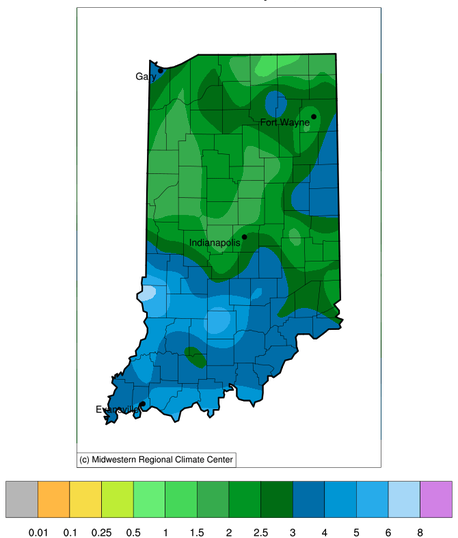
For the past seven weeks, abnormally dry conditions gradually spread and intensified across Indiana to eventually cover over 98% of the state.


For the past seven weeks, abnormally dry conditions gradually spread and intensified across Indiana to eventually cover over 98% of the state.
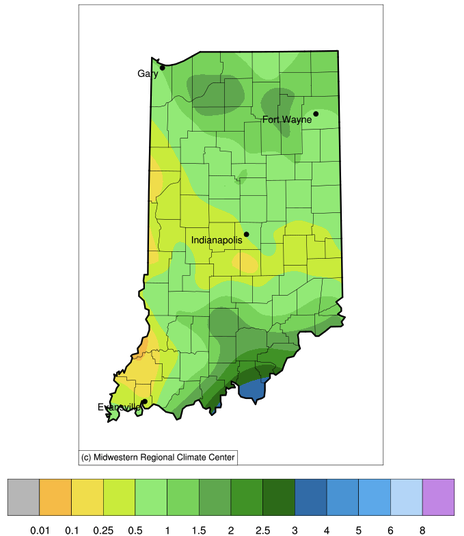
While drought has been on many people’s minds lately, Indiana has had several rain events pass through that brought much needed moisture.

After several weeks of little-to-no rain, Indiana welcomed some much-needed precipitation over the last several days. While amounts ranged from 1-to-3 inches (except for a few counties in west-northwest Indiana (see Figure 1)), the state is still several inches from recovering from the deficit and relieving most impacts. The U.S. Drought Monitor this week (based upon data through the morning of Tuesday, June 13th) now has all of Indiana in some category of abnormal dryness or drought (Figure 2). The driest location is northwestern Indiana where severe drought (D2) is impacting several counties. Most of northern and some central Indiana counties are in moderate drought (D1) with southern Indiana Abnormally Dry (D0). After the additional precipitation that fell on June 13th along with what is forecasted (Figure 3) through next Thursday, Jun 22nd, there is a strong probability that drought will not worsen for much of the southern half of[Read More…]

The last several weeks have seen very little precipitation across Indiana. Figure 1 illustrates how much was received compared to the climatological normal amount from May 9 through June 7. The entire state received amounts less than normal (where normal would be 100 percent on the map) with central and northeastern Indiana having received less than 25 percent of normal amounts. This has resulted in browning lawns, lowered ponds and streams, and most vegetation starting to look stressed. Why is this happening and how long will it last? While the El Niño – Southern Oscillation (ENSO) global teleconnection pattern is shifting from the La Niña phase (that has been around for the better part of three years, now) to the El Niño phase, it is difficult to attribute this dryness to ENSO. Historically, ENSO phases have had weaker correlations to temperature and precipitation in the Midwest – particularly[Read More…]
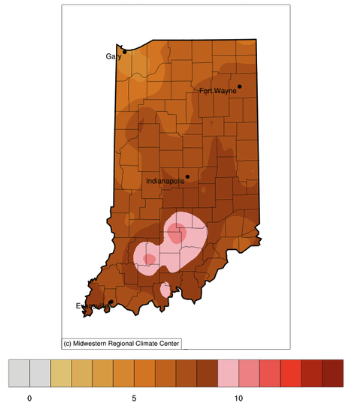
Regardless of when one defines the start of spring, so far it has been mostly on the cooler and wetter side.

Chance for above-normal precipitation in about 2 weeks, but for this time of the year, that doesn’t mean much.
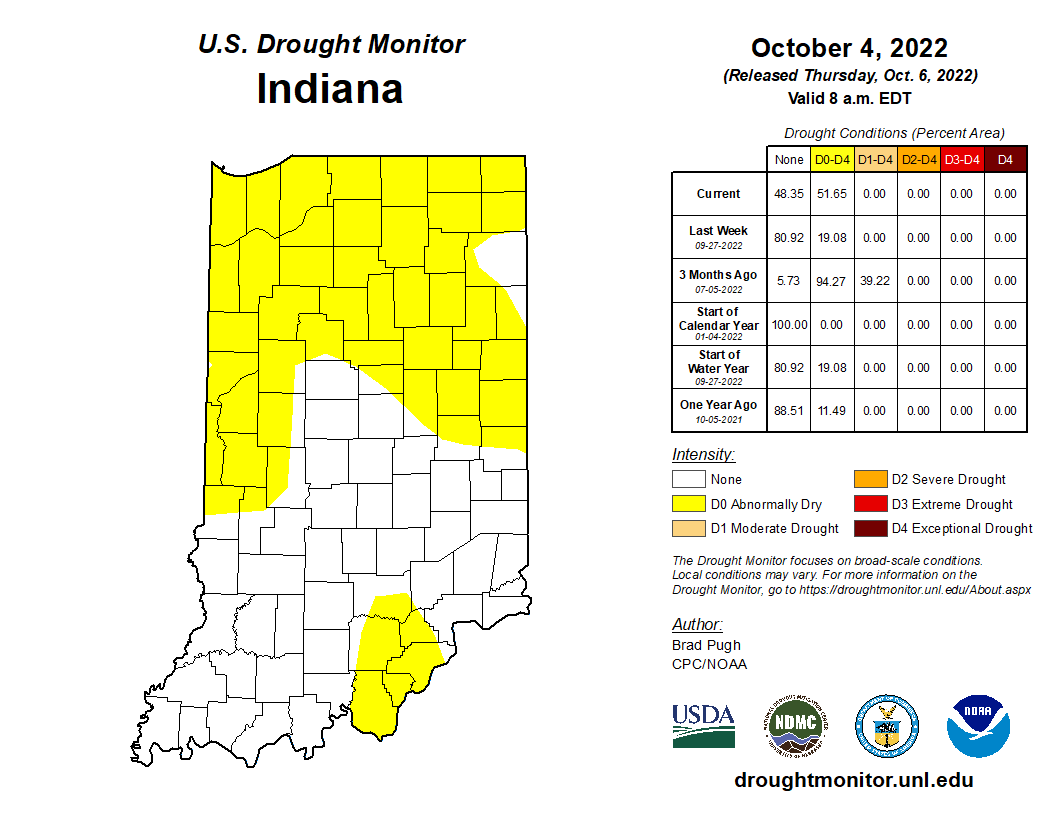
As another dry week passes, we are left to wonder when the next significant rain event will occur. The 7-day precipitation forecast is indicating little-to-no precipitation until the end of next week where amounts are still likely to be below half an inch. Climate outlooks beyond this next week is favoring near-normal precipitation – which may not be enough to get most counties out of their current precipitation deficit. Temperatures seem to be wildly transitioning from above normal to below normal at a time of year when evapotranspiration rates are declining. This could help reduce the rate of drought impacts increasing, but Indiana is still likely to see some in the form of burn bans, mild dust storms, low lakes and streams, and stressed vegetation. With farm equipment entering fields, this could bring additional risk for unplanned ignitions. According to the U. S. Drought Monitor (USDM), abnormally dry (D0) conditions[Read More…]
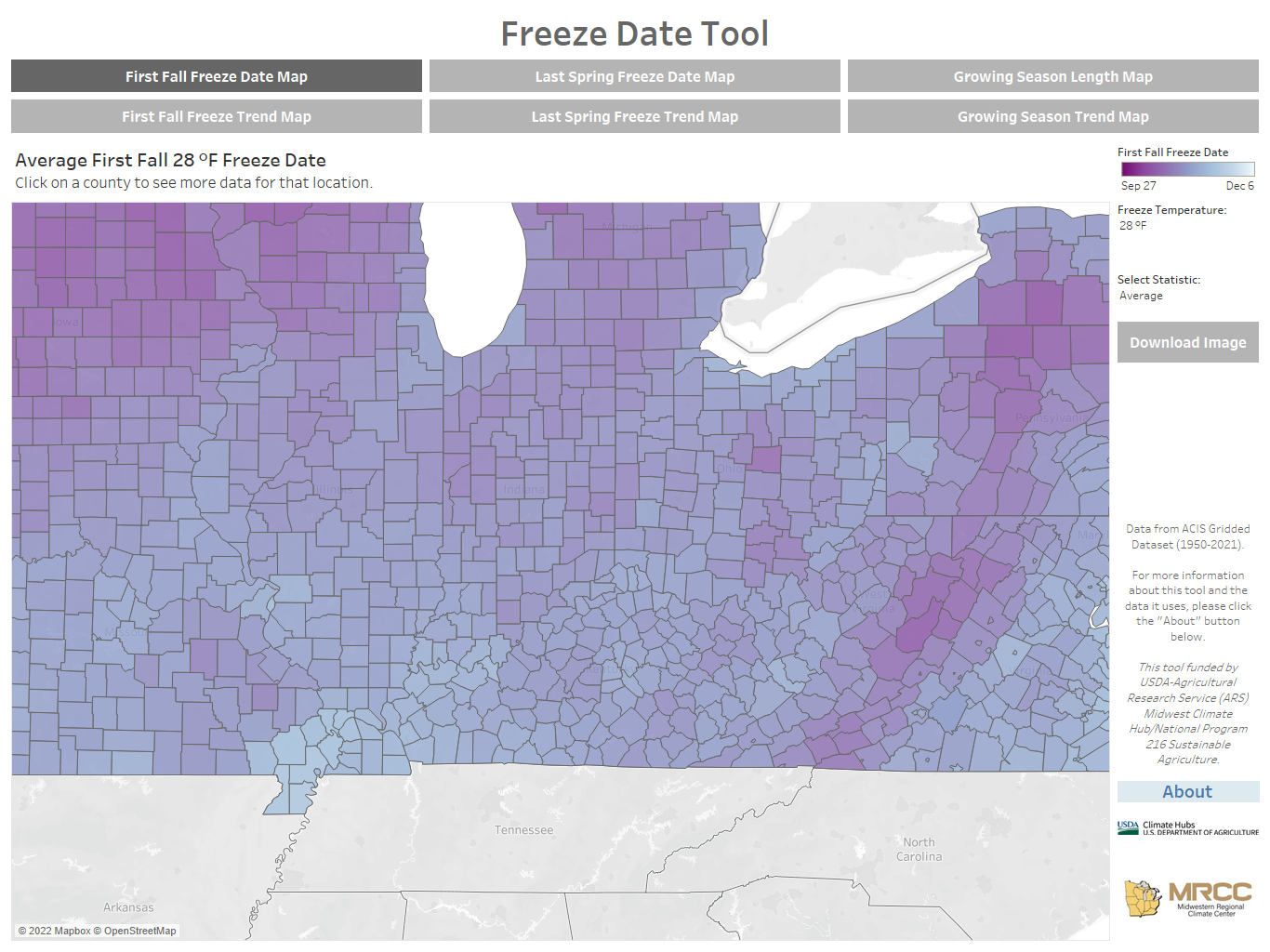
As the days (and nights) have been getting cooler, I wanted to share with you a new online tool that the Midwestern Regional Climate Center (MRCC) has developed that provides an interactive way to learn more about the climatology of the first fall and last spring freeze dates across our region.

After another wet weekend and cooler temperatures to start this week, it may be surprising to hear that conditions will be changing back to warm and dry for the next several weeks.
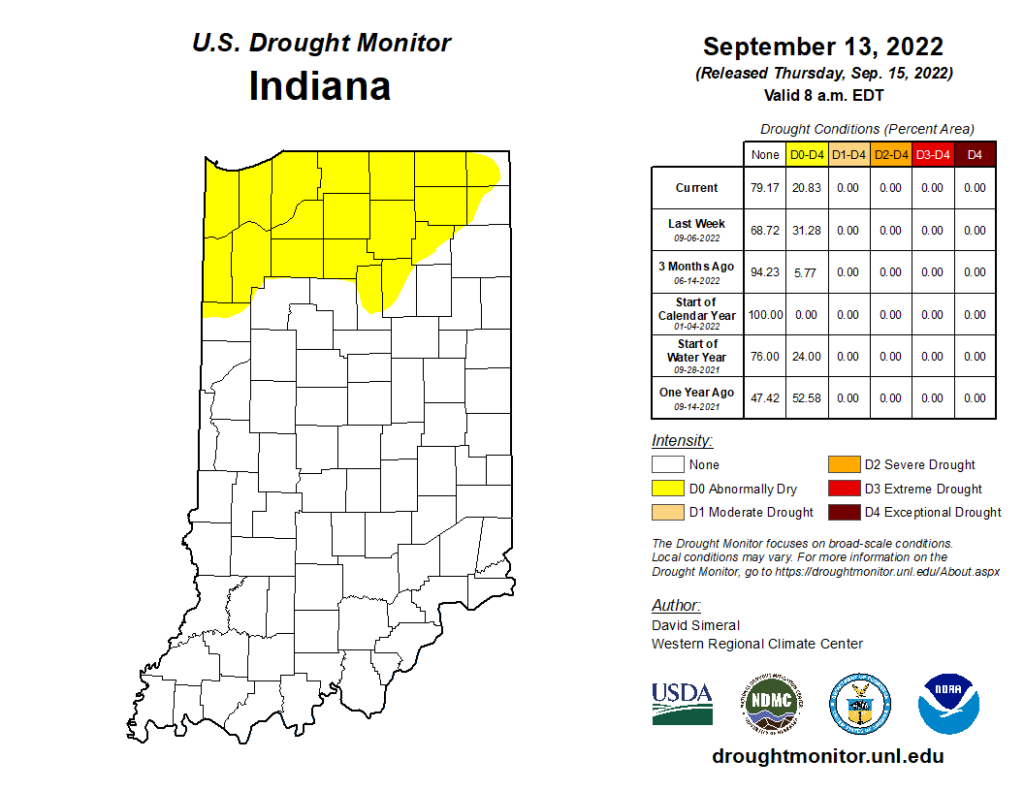
After another wet weekend and cooler temperatures to start this week, it may be surprising to hear that conditions will be changing back to warm and dry for the next several weeks. Climate models are strongly favoring above-normal temperature throughout the rest of September with a slight favoring of below-normal precipitation. Abnormally dry conditions continue to persist in counties across northern Indiana, but the spatial extent is gradually shrinking (Figure 1). It is too soon to tell if the upcoming warm and dry outlooks will be strong enough to expand and intensify those drier areas or if a few periodic rain events will be enough to keep conditions relatively stable. Monthly (October) and seasonal (September-October-November) outlooks were released on 15 September 2022. For both of these time frames, the outlooks are favoring above-normal temperatures to continue with below-normal precipitation across Indiana (Figure 2). With each day that passes, we get[Read More…]
© 2026 Purdue University | An equal access/equal opportunity university | Copyright Complaints | Maintained by Pest&Crop newsletter
If you have trouble accessing this page because of a disability, please contact Pest&Crop newsletter at luck@purdue.edu.